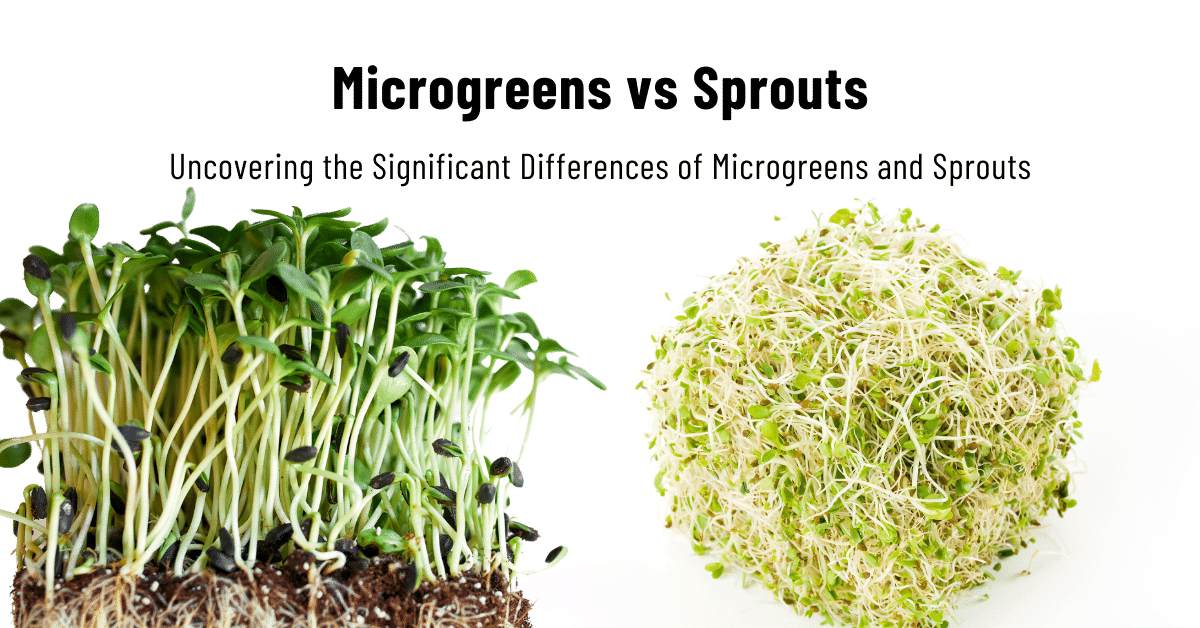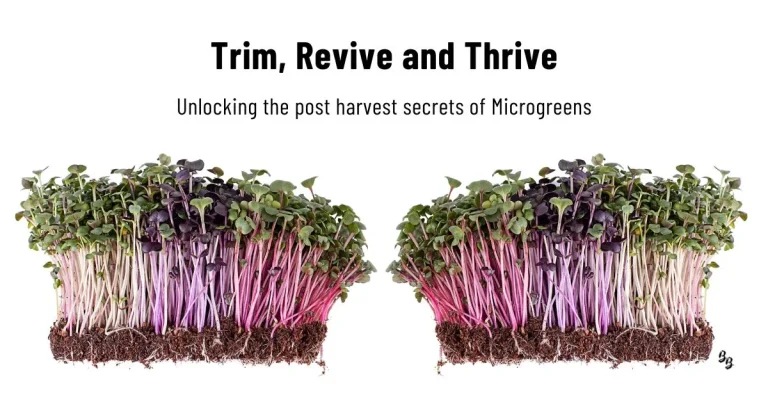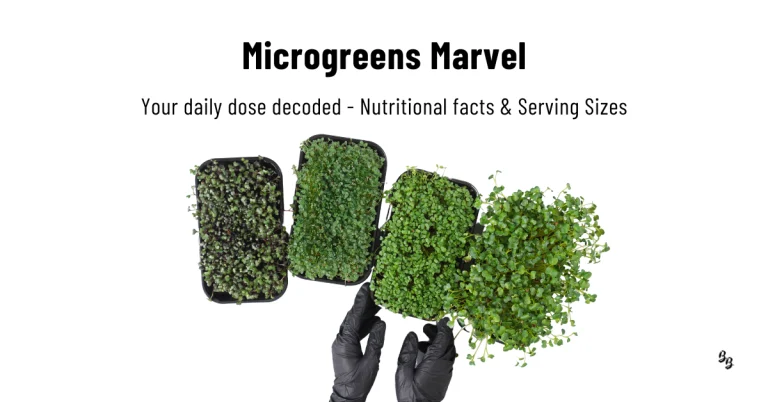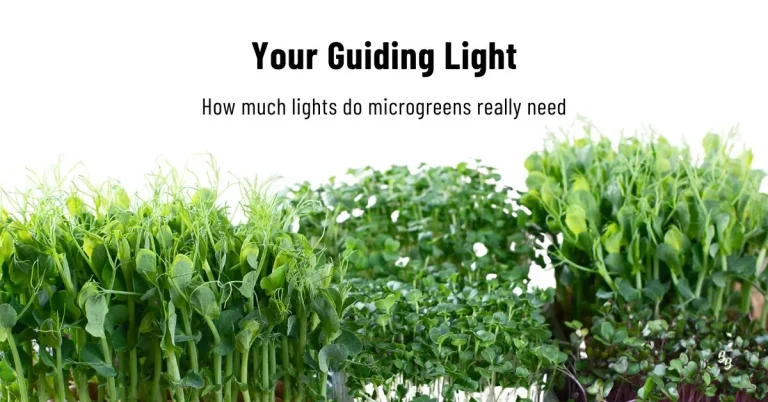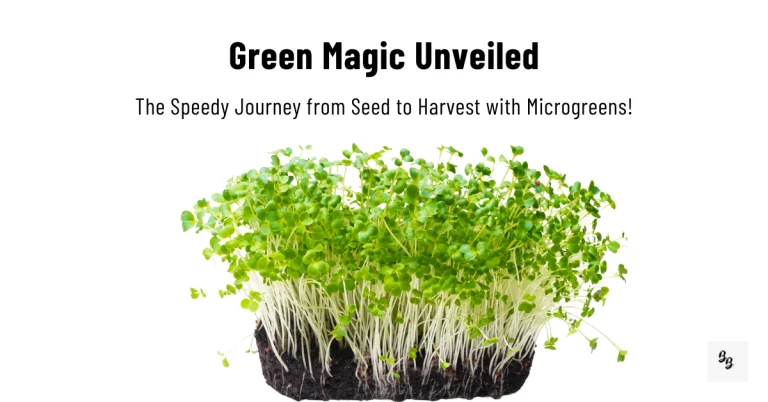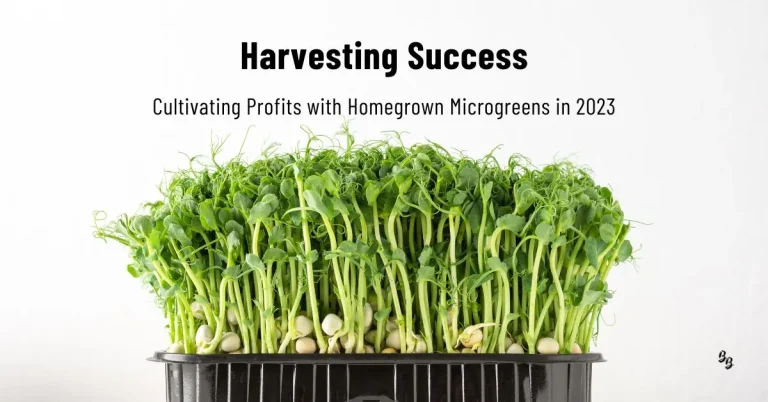Microgreens vs Sprouts: Differences, uses and benefits
In the ever-evolving world of culinary delights, the intriguing debate of microgreens vs sprouts emerges as a flavorful discourse, each offering a distinct burst of freshness and nutrition to elevate our dining experiences
Are microgreens sprouts? This is one of the most common questions I get when marketing our microgreens. And my answer is always the same; “There is a significant difference between microgreens and sprouts. Microgreens offer a higher dose of nutritional value and concentrated antioxidants. While sprouts are an excellent source of protein.”
Despite the growing culinary popularity of microgreens, confusion persists among many regarding the distinction between microgreens and sprouts. There are still those who think microgreens and sprouts fall under the same category.
In this article, I wanted to tackle the subject Microgreens vs Sprouts and share the primary difference between them, their uses and the health benefits that they hold.
To start off, we fist need to look at the significant differences between microgreens and sprouts.
Microgreens vs Sprouts: Their significant differences
Their significant difference lies in the different stages of development.
There are 6 main classes, namely; growth & appearance, cultivation methods, safety considerations, nutritional profile and culinary uses.
To understand why you can not classify microgreens within the same category as sprout, we’ll look at each of these classes.
The Growth & Appearance Class
The secret is all in the name. Sprouts emerge from germinated seeds, undergoing harvest at the very onset of seed growth. They consist of seed, root and underdeveloped shoot. Sprouts are much taller and do not have fully developed leaves.
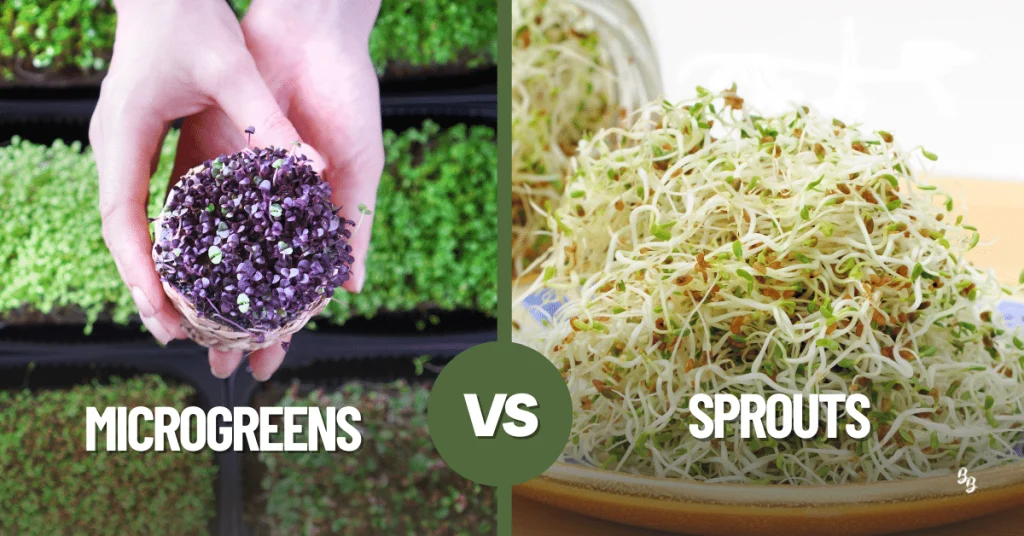
On the other hand, Microgreens are young, baby plants, that are harvested at an early stage of growth. Just when the first true leaves begin to develop. They are larger than sprouts, usually ranging between 1 and 3 inches (2.5 – 5 cm) in height.
The Cultivation Class
The is also a major difference in the way you need to cultivate them.
Growers cultivate sprouts in water through techniques like jar sprouting or hydroponics, with their thriving attributed to the humid growing conditions they require.
While microgreens are typically grown in soil-like growing medium. They require heaps of natural or artificial grow light sources and good circulation.
The Safety Considerations
Yes, safety is always a consideration when it comes to food. Even the things we tend to eat, like sprouts, can be harmful to us, if we don’t take care before consuming it.
Sprouts have been associated with foodborne illness due to the warm and humid conditions in which they are often grown. As a result, there have been health advisories recommending caution when consuming raw sprouts, especially for vulnerable populations.
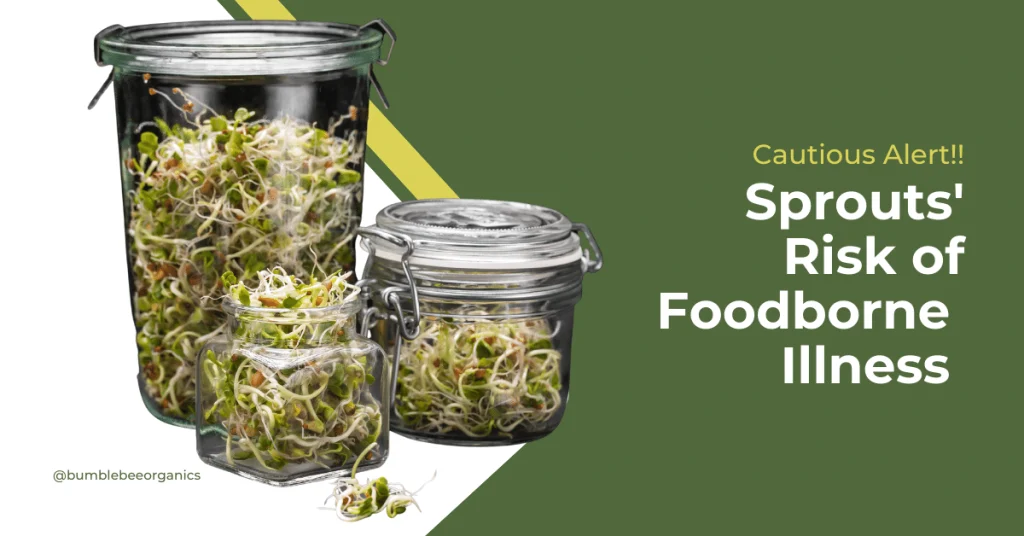
According to an article written by Jeff Carpenter in 2001 from ABC News, sprouts are linked to deadly infections, while a recent post from Food Network Safety warns against sprouts that may be tied to the salmonella outbreak.
Microgreens are generally considered safe to eat, as they are often grown in a soil medium which reduces the risk of bacterial contamination. But, as with everything in life, proper hygiene and sanitation is of utmost importance during the cultivation and harvesting stages.
The Nutritional Profile Class
What we put in our body is important, as it supplies us with the energy and nutrition we need to survive. Sprouts and microgreens are no different. We want to eat them because they are healthy and offer nutritional benefits to us.
Sprouts contain levels of folate, magnesium, phosphorus and vitamin K. But their nutritional composition differs from that of microgreens, due to their younger stage of growth.
While microgreens are known for their concentrated nutrient content. They contain high levels of vitamins and antioxidants compared to that of mature plants.
The Culinary Uses Class
When creating your next dish, perhaps you can use some spouts or microgreens? While they are both packed with nutrients, they are not necessary used in the same fashion.
People frequently incorporate sprouts into salads, sandwiches, and wraps, while microgreens take on versatile roles, serving as garnishes and ingredients in salads, sandwiches, soups, and an array of dishes. They add flavor, texture and visual appeal to a meal. While their counter party, sprouts, only offer flavor and texture.

Now that you understand the key differences of microgreens vs sprouts, let’s dive into the details of each.
Exploring Young Greens: Unveiling Sprouts vs Understanding Microgreens
Understanding Microgreens
Microgreens are young plants, grown in a couple of days and the entire plant is consumed. These little greens pack a great nutritional punch compared to their mature counterparts. They also offer a great way to add higher nutrient contents to the dishes you eat.
These young plants are classified as delicate greens. There is a wide variety of microgreens that can be grown. They are normally harvested once the first set of true leaves appear.
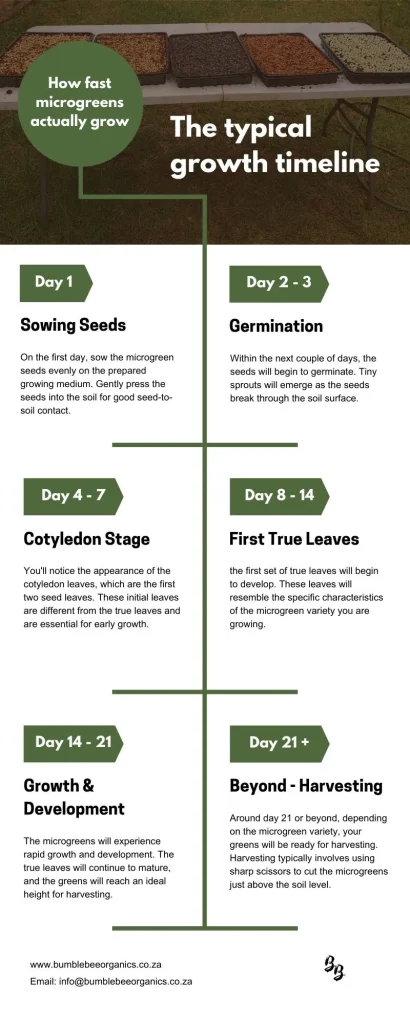
The best part is you can grow your own microgreens in the comfort of your house! Harvest time is between 7 – 21 days, depending on the variety you choose to grow. Harvesting microgreens at home is an easy way to ensure fresh flavor in your home cooked meals.
Microgreens can be grown small scale or commercial and boasts with an array of vitamins, including vitamin c.
From pea shoots to beet greens, even in small amounts, they supply much flavor.
Unveiling Sprouts
Sprouts are germinated seeds that have just begun to grow and develop. Typically, they get consumed at an early stage of growth. Shortly after the seed has sprouted, but before the plant has fully matured.
Sprouts consist of the newly emerged shoot, a small root system, and sometimes the attached seed hull. The entire sprout is consumed and are known for their crisp texture and mild flavor.
While sprouts can indeed offer nutritional value, it’s crucial to acknowledge that their consumption has been linked to various foodborne illnesses stemming from potential bacterial contamination. Consequently, exercising vigilance when consuming raw sprouts is advisable, particularly for individuals with weakened immune systems, young children, pregnant women, and the elderly.
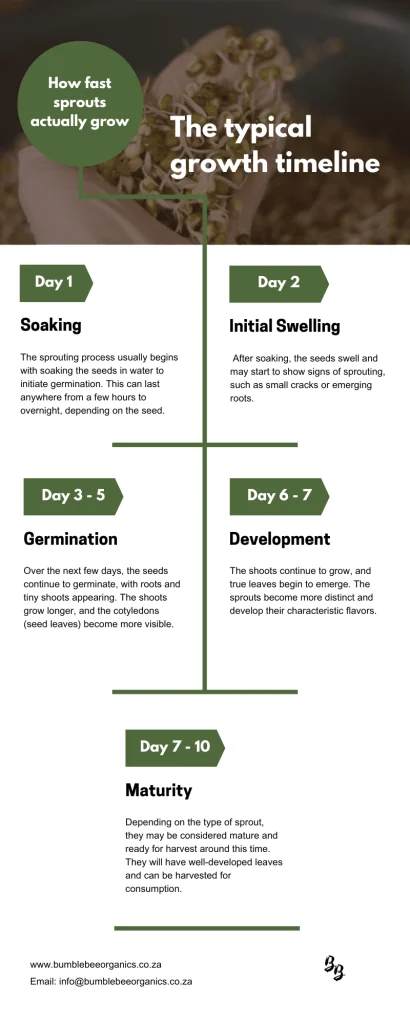
When growing your sprouts at home, make sure to use clean water. We change our sprout water every second day and grow them for at least 6 – 7 days before consuming.
Growing your own can be rewarding. But whether you grow your own or purchase from your local grocery store, the only thing you need to remember is to use caution with sprouts. Even though they offer incredible health benefits.
The good news is, you can also grow a variety of sprouts available, just like with microgreens. There are sprouting kits available that make the growing process easier. Giving you the opportunity to grow your own sprouts, small size, at home instead of large-scale farming.
The Health Benefits of Microgreens Vs Sprouts
It’s a great idea to add both microgreens and sprouts to your diet. As organic food, they offer a range of health benefits, each with its unique nutritional profile.
Incorporating these vibrant greens into your diet can contribute to overall well-being. Here’s a brief overview of the health benefits associated with microgreens and sprouts:
Microgreens: Bursting with Nutrients
Microgreens are nutritional powerhouses, packing a concentrated punch of vitamins, minerals, and antioxidants. These tiny greens often surpass the nutrient content of their mature counterparts. Rich in vitamins A, C, K, and folate, microgreens support immune function, vision health, and cell regeneration. They also provide essential minerals like iron, zinc, and magnesium, which are vital for various bodily processes. The diverse range of flavors and textures in microgreens not only adds excitement to dishes but also contributes to a well-rounded diet. Their antioxidant content aids in combating oxidative stress, potentially reducing the risk of chronic diseases.
Sprouts: Early Nutritional Boost
Sprouts, in their early growth stage, offer a unique set of nutritional benefits. While sprouts are generally less nutrient-dense than microgreens, they offer essential vitamins like vitamin C and select B vitamins. People often enjoy their crisp texture and subtle flavor, frequently adding them to salads, sandwiches, and wraps. Because of their ease of digestion, incorporating sprouts into your diet can contribute to your overall nutrient intake.
Incorporating both microgreens and sprouts into your diet can provide a spectrum of nutrients and flavors. Whether you’re looking to enhance the visual appeal of your dishes with microgreens or add a crisp element with sprouts, these young greens offer a nutritious boost that complements a balanced and health-conscious lifestyle. As with any dietary changes, it’s advisable to consult with a healthcare professional or nutritionist to determine the best approach for your individual health needs.
Embracing the world of Microgreens vs Sprouts
As we’ve journeyed through the world of microgreens and sprouts, it becomes evident that these young greens are more than just a passing trend in the culinary landscape.
Each holds its own unique charm and nutritional prowess, offering a tapestry of flavors, textures, and health benefits that can elevate your meals to new heights.

Microgreens, with their vibrant hues and robust nutrient profiles, beckon us to embrace their diversity and culinary versatility. On the other hand, sprouts arrive at our plates with their own tale to tell.
These early risers bring a crisp bite and mild flavor, ready to enliven salads, sandwiches, and wraps. Yet, caution stands as our steadfast companion in the world of sprouts, reminding us to tread carefully due to the potential for bacterial contamination.
Now that you’ve grasped the distinction between microgreens and sprouts, let your plate come alive with the vibrant kaleidoscope of microgreens and the enchanting delicacy of sprouts.
Celebrate the distinct and delightful roles they play in your meals, savoring every bite as you weave together a tale of taste, health, and culinary exploration. Bon appétit and Happy Growing!

